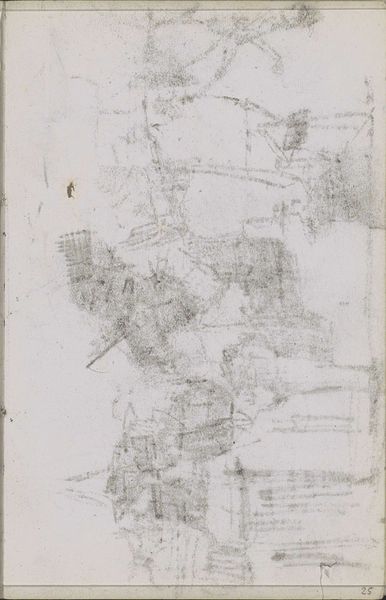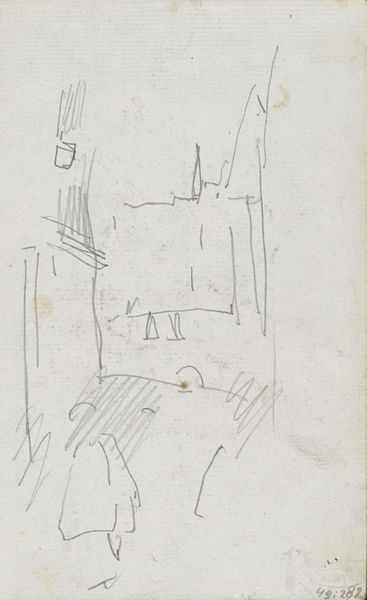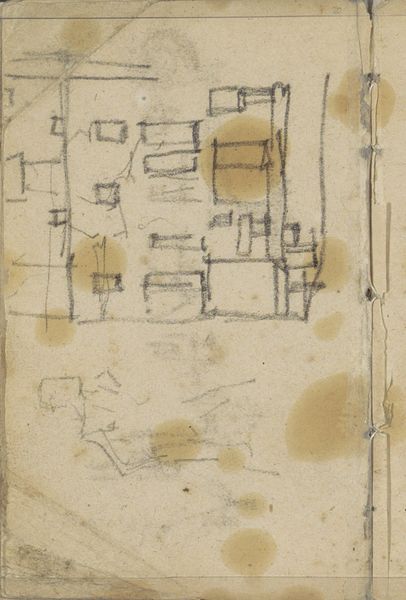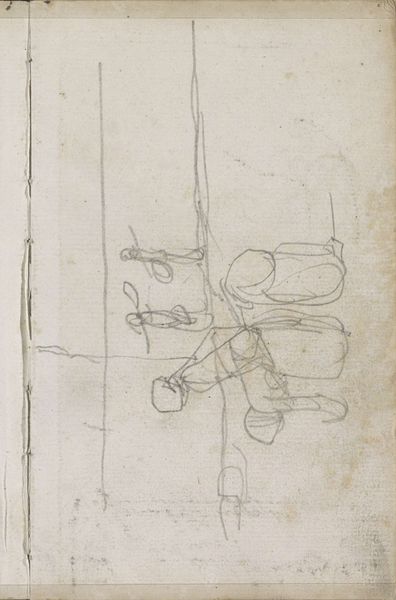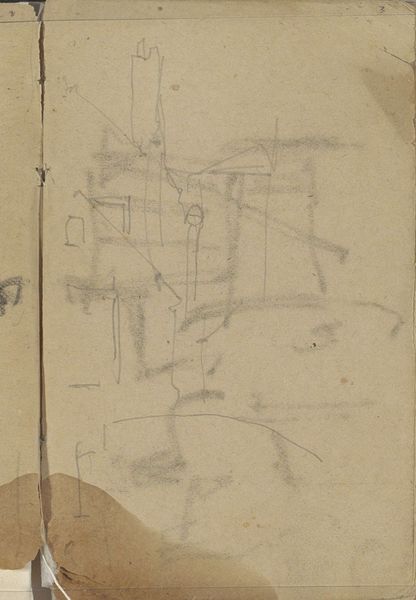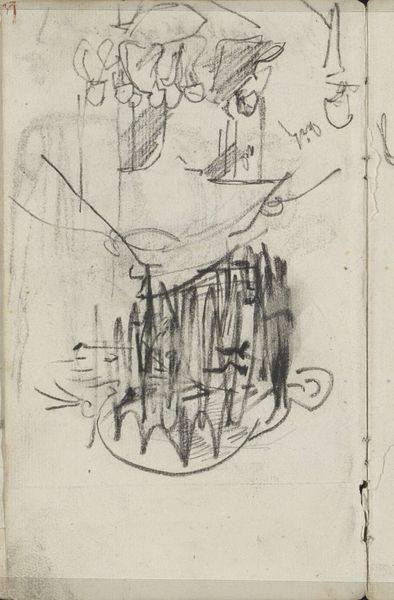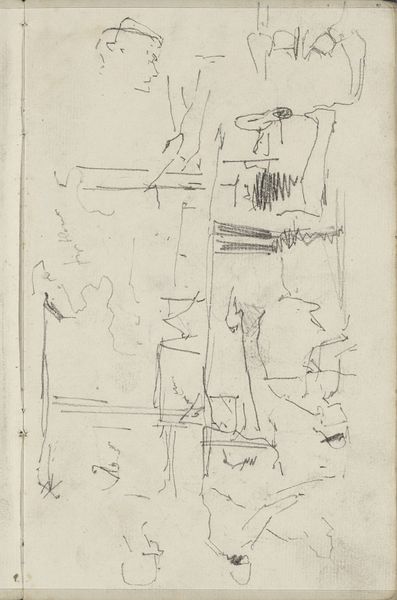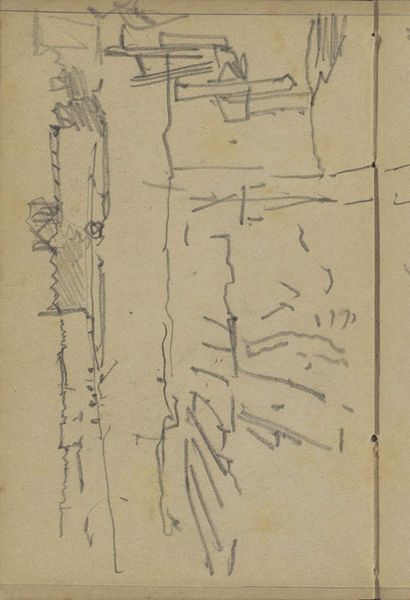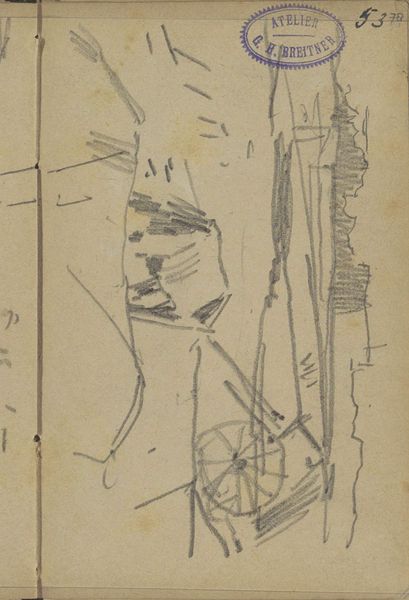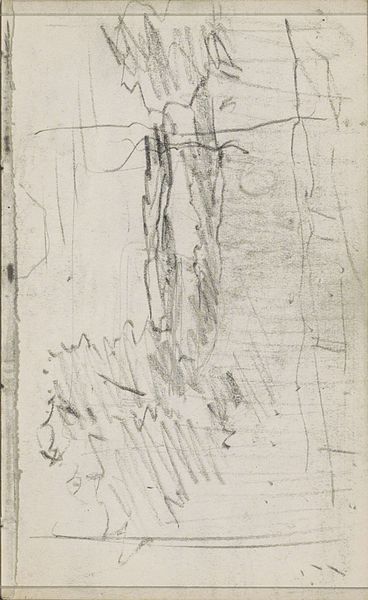
Copyright: Rijks Museum: Open Domain
Editor: We are looking at "Studie, mogelijk van paarden," or "Study, possibly of horses" by George Hendrik Breitner, from 1893, created using pencil. I'm struck by how skeletal it is. It's just lines suggesting forms, but what catches your eye? How do you approach a drawing like this? Curator: Primarily through its compositional elements. The artist has created a series of planes, one layered upon the next. These layered marks construct the overall form; this accumulation of marks signifies an interest in capturing the immediacy of visual experience. We should consider what role line quality plays here. Editor: The lines seem so fleeting, almost as if Breitner was capturing a momentary glimpse of these horses. What can you tell me about how this drawing would inform Breitner’s larger works? Curator: Breitner’s mark-making has produced spatial recession using tone and texture to articulate this study. I suggest examining how line is used to define not only contour but also volume and space. Think about the negative space created between these lines. Editor: So, looking at the relationships between the lines and the implied space more than the actual representation of horses? Curator: Precisely. Representation is, in a sense, secondary to the formal construction. To what extent do those blotches disrupt or contribute? How does the tonality function alongside line? These qualities have formal significance and suggest process and intention. Editor: I never considered how much the incidental marks could contribute to the reading of a drawing. Curator: That's the joy of formal analysis – learning to see beyond the obvious and understand the language of the artwork itself. It pushes one to find the work’s internal consistencies and understand what decisions, artistic and authorial, contribute to the whole.
Comments
No comments
Be the first to comment and join the conversation on the ultimate creative platform.
